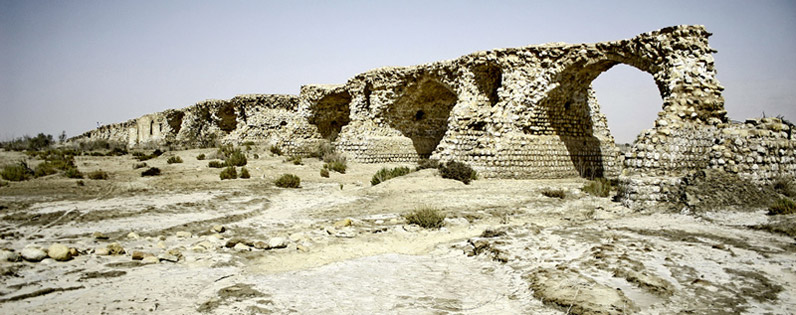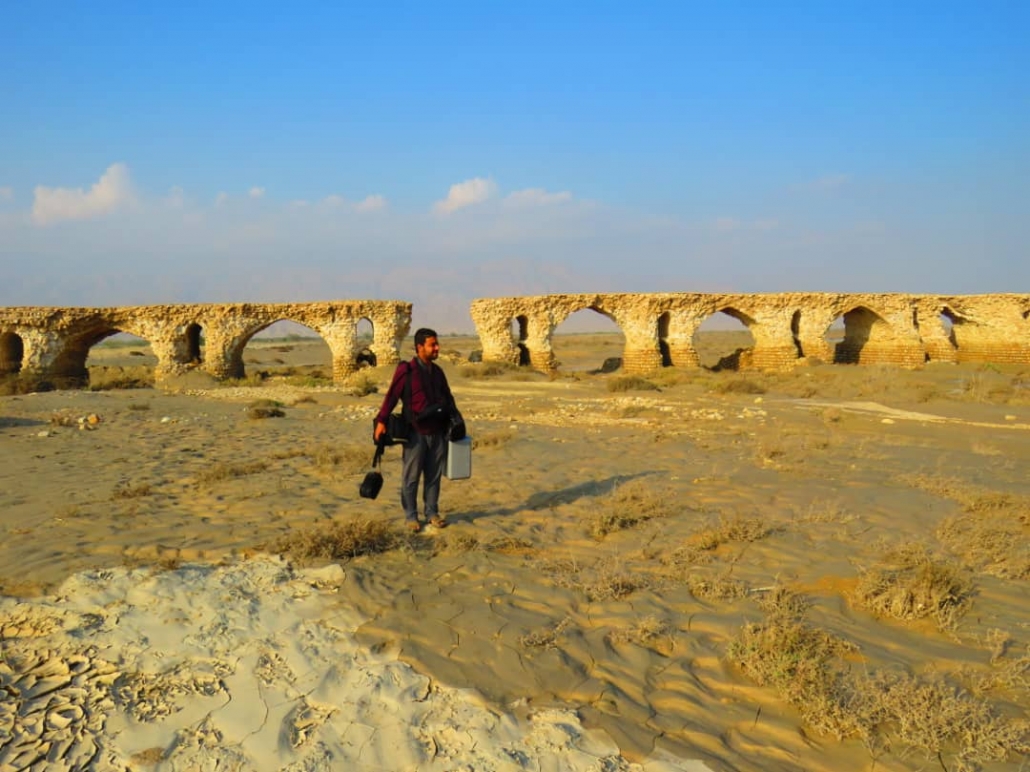The Latidan Bridge, a remarkable structure from the Safavid dynasty, stands as one of the most significant landmarks in Iran’s Hormozgan Province. Constructed in 1627 during the reign of Shah Abbas I, this impressive bridge was initially built for military purposes amid the conflict with the Portuguese, particularly during the Portuguese occupation of Hormuz Island.
Engineering and Construction
The design of Latidan Bridge reflects the advanced engineering practices of its time. Utilizing local materials such as limestone and mudbrick, the bridge was constructed using traditional techniques that have proven resilient against the region’s harsh climate and seasonal flooding. The robust design includes a series of semi-circular arches that provide both aesthetic appeal and structural stability. This engineering foresight made the bridge a crucial asset for the movement of troops and supplies, facilitating strategic military operations during a time of conflict.

Transition to Trade and Economic Importance
Once the military conflict subsided, Latidan Bridge underwent a significant transformation. It evolved from a military stronghold into a vital commercial route, marking its enduring importance and adaptability over the centuries. The bridge not only served as a transportation route for merchants and goods but also became a key element in enhancing trade connections between the Persian Gulf and the interior of Iran. This evolution underscores the bridge’s flexibility and its vital role in the economic development of the region, contributing to the prosperity of local communities.
Architectural Features
Latidan Bridge is characterized by its elegant arches and sturdy construction. The semi-circular arches not only facilitate the safe passage of people and goods but also create a visually striking silhouette against the landscape. Its architectural design showcases the sophistication of Safavid engineering, incorporating elements that ensure durability and functionality. This blend of form and function exemplifies the artistry and practicality of the time.

Cultural Significance
Beyond its practical functions, the Latidan Bridge holds cultural significance as a symbol of the Safavid era’s architectural achievements. It embodies the historical narrative of a time when trade and military strategies were paramount to the empire’s success. The bridge’s endurance through centuries of weathering and natural forces is a testament to the exceptional craftsmanship of its builders, making it a cherished cultural heritage site. It serves not only as a physical structure but also as a reminder of the historical and cultural contexts from which it emerged.

A Lasting Legacy
Today, despite enduring the ravages of time, much of the Latidan Bridge remains remarkably intact. It serves as a testament to the engineering prowess of the Safavid era, showcasing the ingenuity of its ancient builders. As a prominent landmark, it attracts visitors and historians alike, inviting them to explore the rich history and cultural significance embedded within its stones.

In summary, the Latidan Bridge is more than just a physical structure; it symbolizes Iran’s historical and cultural journey. It embodies the interplay of military strategy, trade, and architectural brilliance that defines the legacy of the Safavid dynasty. The bridge continues to be a vital link between past and present, preserving the stories of those who traversed it and contributing to the ongoing narrative of the region.

